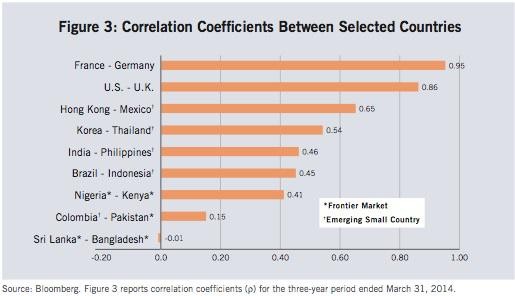Emerging Market Debt An Overlooked Source of Alpha
Post on: 13 Май, 2015 No Comment

After the global financial crisis, emerging market debt was a rising star. Yet, since last fall these markets had steadily lost ground. Now that these markets appear to have stabilized in recent months, are there opportunities for investors? If so, are these opportunities beta or alpha? In other words, can you jump in with both feet or do you have to be selective in what you invest?
Many investors treat emerging markets as a beta opportunity. They expect emerging markets to rise and fall as a block, and sometimes rightly so. For example, this beta consistency was very obvious in the recent emerging market volatility induced by the US Feds tapering of quantitative easing (QE) and the strong dollar. For much of the decade prior to the recent sell-off, the approach also served investors well despite unprecedented volatility during the global financial crisis. Much of the selling earlier in the year and the more recent rebound took place in the ETF market. Both major emerging market stock and debt ETFs have performed well over time, in part because the major ETFs in this area were launched in the bull market of the developing economies they covered.
So what has changed since last year? Generally questions about market performance and outlook can be best answered by taking into account both market fundamentals and sentiment. Opportunities arise typically when there is a change in sentiment unrelated to fundamentals. The sell-off began in the fall of 2013 when market speculation about QE tapering intensified, so there has clearly been a change in sentiment. But does QE tapering have a real impact on the emerging market debt fundamentals? Or was the market deterioration overdone?
Recall that in my recent blog post What Makes Emerging Market Debt Tick , I explained that performance of emerging market debt as a group is affected by country risk, currency risk, and corporate credit risk. Lets take a look at how these factors have evolved in recent months.
In regard to internal balances or (government and corporate) credit risks, Magnus pointed out that domestic debt is substantially higher now compared to 1997, especially in developing Asia, where nonfinancial debt as a share of GDP has surpassed that of the United States. What is of greater concern is that many emerging market economies have fallen into the middle income trap and can no longer rely on their old growth models characterized by credit expansion and export growth.
On external balances or the currency side, QE tapering by the US Federal Reserve raised market expectations not only for rising interest rates but also for a strong dollar. The expectation of higher interest rates and exchange rates is the direct reason why international investors were exiting emerging markets in droves. And who could blame them when you consider that what brought them to emerging markets in the first place was QE and other external factors that are estimated to have accounted for 60% of the increase in capital flows to emerging market economies between 2009–2013 along with low US interest rates?
Portfolio managers at Franklin Templeton seem to share Magnus’s concerns about emerging markets. In a recent interview with Morningstar. they highlighted the rising interest rate environment and the growth headwinds across emerging markets. More importantly, they pointed out that fixed-income performances across emerging markets were dramatically different in 2013, a trend which is likely to continue. In 2013, in local currency terms, Hungary had double digit gains while Brazil, South Africa, and Turkey lost 14%, 19%, and 21%, respectively. Who said bonds are boring?

So how do you pick the winners and avoid the losers? Franklin Templetons managers are staying away from countries with “twin current account and fiscal deficits [that] may ultimately result in currency weakness.” (Think: Turkey.) Sound familiar? They also like countries, such as most of developing Asia, that have fared well on both accounts and hence were caught in the storm for all the wrong reasons. These views jibe well with Magnus’s macro perspectives as fiscal problems as deep as Turkeys tend to take many years to resolve, while the currency and balance of payments issues the emerging Asian countries are experiencing are probably much more fleeting in nature.
There are simple ways to get exposure to certain regions once you have decided which are your favorites. For starters, one way to reflect your preference is to adjust the allocations across the three groups of emerging market debt. For example, sovereign debt and corporate debt indices, and products that are benchmarked against these indices have different exposures to various regions and countries. Local currency sovereign debt and US dollar-denominated corporate debt indices offer more exposure to Asia than US dollar-denominated sovereign debt given the financial strength of the Asian governments and corporations. Latin America on the other hand is more heavily represented in US dollar-denominated sovereign debt indices.
The old saying “when America sneezes the world catches a cold” is still largely true in the bond market. Ultimately, however, it’s the ability to tell the markets that have merely caught the bug from those that are chronically ill that set good investors apart from the crowd.
Please note that the content of this site should not be construed as investment advice, nor do the opinions expressed necessarily reflect the views of CFA Institute.
Photo credit: Imaginechina via AP Images














